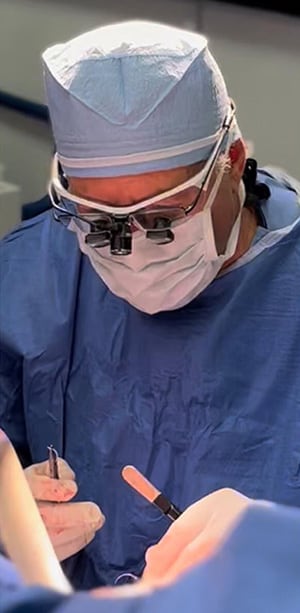Nothing is more looked at, and into, than the eyes. The eyes are often said to be “the windows to the soul”; however, the eyelids should not shade this beauty! Sometimes, excess skin obscures the upper eyelids due to aging, and bags can overtake the lower lids. The orbitomalar complex is comprised of the eyebrow, the eyelid, the cheekbone, and the soft tissues of the lower lid. The crucial relationship between these anatomical elements must work in conjunction to produce an attractive overall aesthetic.
Often these elements are disadvantaged by the gravitational effects of the aging process – yet sometimes, genetics are responsible. In fact, many young people possess protruding lower-lid fat pads that create an appearance of looking perpetually tired, or they might suffer from an overabundance of upper-eyelid skin. Blepharoplasty surgery, also known as “eyelid lifting,” can correct all of these issues. Most important is to have a conservative approach so the eyes are returned to their natural shape and attractiveness without obscuring someone’s original aesthetic.
Top New York plastic surgeon Dr. Barry Weintraub is board-certified and Ivy League educated at the Weill-Cornell Medical Center. He is a national spokesperson for the American Board of Plastic Surgery. With more than two decades of experience, Dr. Weintraub is in his surgical prime with the quiet calm of success – mature in his aesthetic judgment, and possessing a keen eye toward natural beauty.
- What is Blepharoplasty?
- Considering Blepharoplasty
- Goals of Blepharoplasty
- Your Consultation
- Choosing A Plastic Surgeon
- How Blepharoplasty is Performed
- Where the Blepharoplasty is Performed
- The Best Candidates for Blepharoplasty
- Preparing for Blepharoplasty
- The Cost
- After Surgery
- What Sets Dr. Weintraub Apart




 Dr. Weintraub has always been blessed with a strong aesthetic sense. He possesses a unique blend of medical science and artwork, as it truly is artwork that he performs on the human form. His attention to detail ensures that he gets the best results possible, and he is meticulous about everything he does, from pre-op to post-op care and beyond.
Dr. Weintraub has always been blessed with a strong aesthetic sense. He possesses a unique blend of medical science and artwork, as it truly is artwork that he performs on the human form. His attention to detail ensures that he gets the best results possible, and he is meticulous about everything he does, from pre-op to post-op care and beyond.